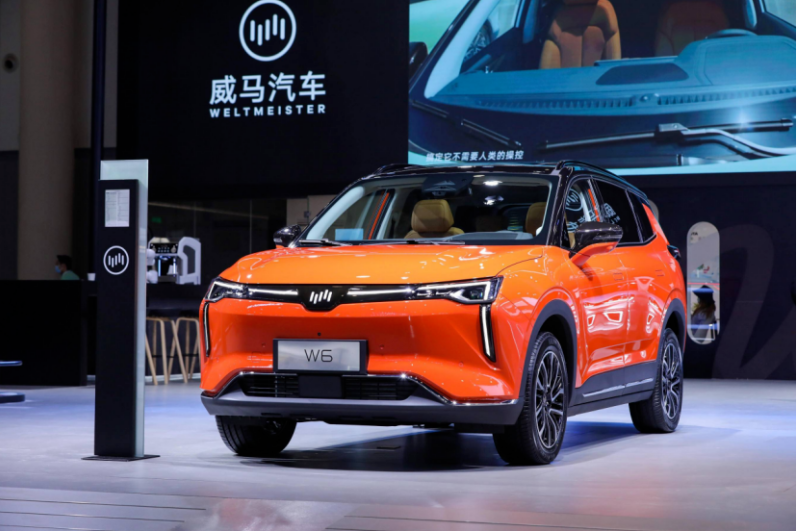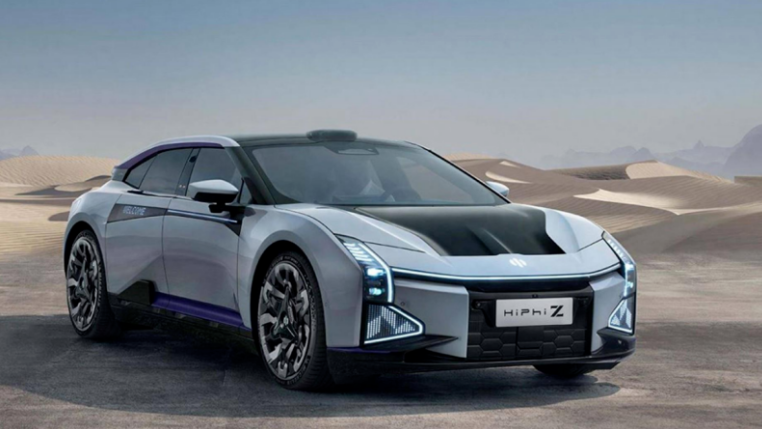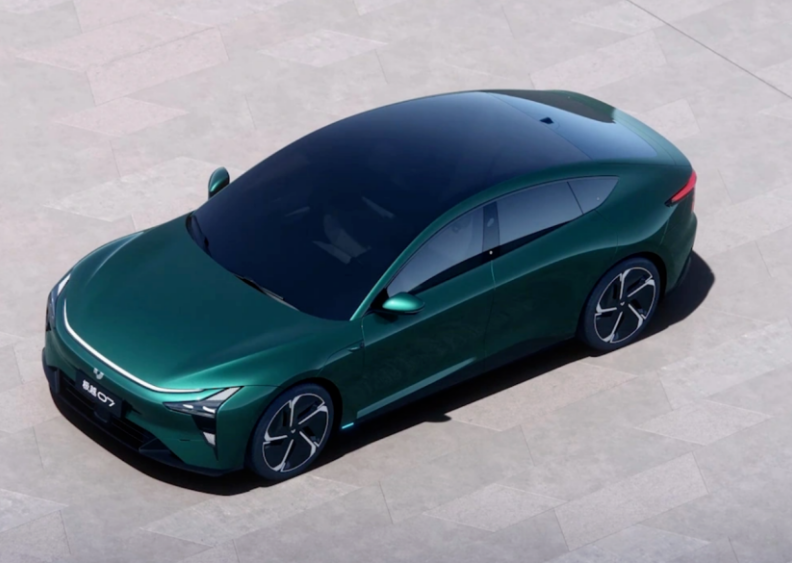In July, China's new energy vehicle market witnessed a notable "revival wave" as companies like WM Motor, HiPhi, and Leap Motor, which were mired in operational crises, launched restructuring plans. WM Motor, which had been relatively quiet, announced plans to resume production of its EX5 and E.5 models in September, aiming for an annual production and sales target of 10,000 to 20,000 units, with a long-term goal of reaching a million units by 2030. HiPhi faced a setback in its restructuring due to a $600 million investment from Middle Eastern capital that fell through. Leap Motor is accelerating negotiations with three to four potential restructuring partners. However, the infusion of capital and the resumption of production are merely the prologue to a life-and-death struggle. In an unforgiving market where BYD sells a million units annually and Xiaomi recently topped sales charts, the "second entrepreneurship" of struggling companies resembles a fight for survival. Factors such as consumer trust issues, technological gaps, and financial chain concerns form formidable barriers to survival, suggesting that the outcome of this revival contest could be more brutal than the initial eliminations. The transition from elimination to revival in the new energy vehicle industry has transformed it into a battleground of competing capital interests. WM Motor is promoting its revival with a strategy of "strategic investment of 10 billion yuan + light asset operations," opting for a "Store + Station + Spot" channel system to reconstruct market reach through sales channel reconfiguration, service network densification, and scenario-based touchpoints. Behind this innovative model is the short-term liquidity support from Shenzhen Xiangfei Automobile Sales Co., Ltd.'s over 10 billion yuan investment, yet the financial reality of over 20 billion yuan in liabilities makes its "2030 million production and sales" target seem more like a vision than a viable plan. HiPhi's revival dilemma exposes the risks involved in cross-border capital operations, as the breach of contract by its Middle Eastern investors not only halted the restructuring process but also highlighted the limitations of emerging market capital's understanding of the new energy vehicle industry. When brand premium cannot offset geopolitical risks, seemingly attractive overseas capital can become the final straw that crushes a company. This lesson echoes a case from three years ago, where a new energy company halted production due to Southeast Asian capital withdrawal. Leap Motor's restructuring negotiations showcase the strategic tug-of-war between traditional automakers and tech companies, where potential restructuring partners are raising their safety standards for intelligent driving assistance systems in the wake of a trust crisis triggered by the Xiaomi SU7 incident. This technical rejection mechanism marks a shift in decision-making logic where capital now prioritizes underlying technology verification over mere traffic pursuit. Capital has become a key driver of revival, while policy dividends create a buffer for recovery. In 2024, production and sales of new energy vehicles are expected to exceed 10 million units, with a penetration rate over 40%. By 2025, sales are projected to reach 16.5 million units (including exports), with penetration exceeding 50%. Meanwhile, technological iterations bring opportunities to niche markets: solid-state batteries and megawatt-level fast charging (such as BYD's 400 kilometers of range in just 5 minutes) are driving industry upgrades. Revived companies generally adopt a "conservative strategy"; WM Motor prioritizes the resumption of its mature models, EX5 and E.5, leveraging its existing supply chains for quick recovery. HiPhi continues to focus on high-end electric vehicles to avoid direct competition with leading players. Channel innovation is also a priority, with WM proposing a three-tier network of "Store + Station + Spot" to reduce costs by combining direct sales outlets, cooperative points, and community service spots. Although this light asset operation can alleviate financial pressure, it also exposes technological shortcomings—WM has yet to announce its 800V platform or urban NOA intelligent driving plans, widening the technological gap with competitors like Xiaomi and Huawei, setting the stage for future market competition. Opportunities in the red ocean market are limited. The primary challenge for revived companies is the fierce competition and trust deficit in the red ocean market, where the current market structure has shown "layered" differentiation, resembling a distribution of "6+3+1". Leading companies like BYD and Tesla capture 60% of the market share, while other traditional and emerging players compete for the middle 30%, leaving only 10% for smaller firms. Revived new forces like WM Motor clearly occupy this 10% ecological niche, and whether they can carve out a path remains a significant question. Revived brands must confront the crushing force of giants while also addressing the consumer trust crisis. Yu Tianyu, head of the Kailian Capital Research Institute, stated, "There is no concept of 'small and beautiful' in the Chinese automotive market. The scale effect of automakers is already evident, and brand awareness has matured, which cannot be rebuilt in a short time. Those who failed to persist or exited midway have lost their first-mover advantage and find it hard to compete again." At the same time, some experts indicate that in the current market environment, consumers of new energy vehicles are more cautious in their product choices, preferring brands with good reputations and stable development. Consumers often adopt a wait-and-see attitude towards those new force companies that have previously encountered difficulties, fearing various risks after purchasing their products. According to an industry survey by Ping An Securities, over 60% of consumers have doubts about the long-term service capability of "revived brands", and this trust gap has become the primary obstacle to sales conversion. The financial chain remains the biggest uncertainty in the revival race; even though some companies have received funding, their long-term viability is concerning. WM Motor's liabilities exceed 20 billion yuan, and suppliers are cautious about its repayment ability, requiring "collateral guarantees" for cooperation. Neta Auto, although having secured a 10 billion Thai baht credit line in Thailand, sold only a few hundred units in January-February this year, far from the industry survival line of 100,000 units. According to overseas media reports, Neta Auto has had some subsidy payments withheld by the government due to its inability to localize the agreed number of vehicles in Thailand and is being pursued for about $6.17 million in debts by 18 local dealers. The situation is even more severe, as the capital market's patience with tail-end companies is waning—Evergrande Auto's $500 million financing has repeatedly failed, and HiPhi's $600 million debt is overdue, reflecting the cautious approach of capital towards "second blood transfusions". The technological gap caused by the period of stagnation has become a fatal flaw; WM missed the smart driving upgrade window from 2023 to 2025, as the penetration rate of L2+ intelligent driving has surged from 39% to 53%, and the 800V platform is gradually becoming mainstream, while WM continues to use the 400V platform, clearly showcasing product weaknesses across multiple dimensions. In terms of the supply chain, WM needs to rebuild relationships with suppliers that were disrupted due to production halts, while some core component companies have shifted to partnerships with Xiaomi and Huawei. Industry analysis indicates that the R&D investment intensity of tail-end companies is less than one-fifth that of leading companies, with talent loss further slowing the pace of technological catch-up. Facing a threefold siege, the key to breaking the deadlock for revived companies lies in rebuilding trust and precise positioning. In terms of trust restoration, experts suggest implementing "bankruptcy insurance for car companies", collecting premiums based on sales volume to provide after-sales guarantees for collapsed brands; WM plans to offer subsidies for old customers to exchange and bind B-end markets through ride-hailing collective purchases to reduce C-end sales resistance. According to incomplete statistics from CheMarket Insight, there were once over 110 brands in the Chinese market, with about 20-30 currently active, and more than 73% have been "eliminated" in the past three years. The "revival race" of new forces is essentially a gamble against time. The infusion of capital and the resumption of production are merely tickets to the entrance; the next 3-6 months will be a crucial survival window: WM must demonstrate the feasibility of its 10,000-unit target for the EX5 by the end of the year; HiPhi urgently needs to resolve the investment breach crisis; and Leap Motor must quickly finalize its restructuring partner to avoid a second shutdown. The market's conclusion may well be as Zhu Jiangming, the founder of Leap Motor, stated: "In the future, there will be no more than 10 surviving car companies." When technology, funding, and trust become insurmountable barriers, a fleeting "revival" that cannot cross the critical hundred-day survival line will become the prelude to a more thorough demise.
China's New Energy Vehicle Market Sees Revival Amidst Challenges

Images


Share this post on: